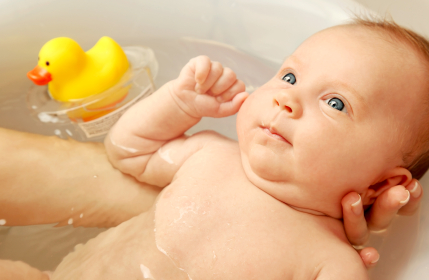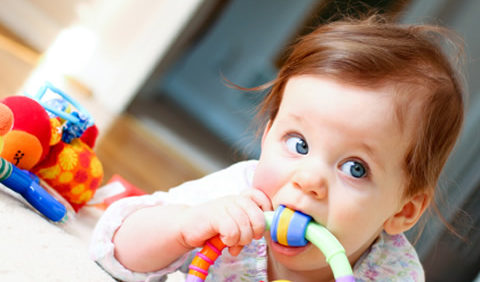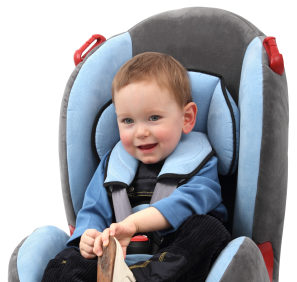
Did you know that a cup of tea can burn a child 15 minutes after it has been made?
Babies and children’s skin is so sensitive.
A baby’s skin is 15 times thinner than an adults.
Children are particularly vulnerable to burns.
Burns are the 11th leading cause of death of children aged 1–9 years and are also the fifth most common cause of non-fatal childhood injuries.
Burns are preventable.
A combination of prevention strategies, education and improvements in patient care of people is lowering burn rates.
In 2013 according to the Fiona Wood Foundation 300 children were hospitalized at the Princess Margaret Hospital for Children.
That is just one hospital! Of the 300 children the following alarming statistics were shared:
- 54% of admissions are burn scalds largely due to hot drinks
- 10% of admissions have burns caused by running through hot ash from old camp fires
- 40% of admissions require skin grafting surgery to help heal their burn.
The greatest number of burns occur within the home.
There are safety precautions we can take to prevent burns within the home.
The two main areas that burns occur are the kitchen and the bathroom.
Kitchen burns and scalds
There are many hazards in the kitchen.
The oven, the kettle, the saucepans, hot food and on and on.
In the kitchen scalds are twice as common than thermal burns.
The 2 most common scald scenarios are
- A child reached up and pulled a pot of hot water off the stove or kitchen bench
- A child grabbed, overturned, or spilled a container of hot liquid onto themselves.
Kitchen prevention measures
- Ensure all saucepan and fry pan handles are facing away from the edge of the stove.
- Avoid using tablecloths. Children can pull on them and pull hot items on the table onto themselves.
- Never hold a child while cooking.
- Ensure all cords are pushed to the back of the bench and out of reach.
- Avoid leaving hot drinks unattended. Keep your hot drink cup in your hand and away from children at all times.
- Be careful when using a microwave. Microwaves can heat with hot spots. Ensure all food is stirred well and tested thoroughly.
Bathroom burns and scalds
The most common burn in the bathroom is the bath.
It is during a bath time that young children are at a great risk of burns and scalds or drowning.
Water at 60’C will cause a full thickness burn, known as a third degree burn to adults. This can take only 1 second for a child.
To combat this, the easiest and most efficient is recommended to have the hot water tap no hotter than 50’C to help reduce this risk. While this still sounds very hot, it will now take 5 minutes to burn to the same degree not 1 second.
The water temperature in most Australian homes is over the 60’C.
This is because 60’C is the minimum for the hot water storage temperature to keep any dangerous bacteria away. So in this respect just turning the thermostat down is not really an option.
One alternative, and a cheap remedy, is to install a end of line shut off valve which costs around $30 and can be relatively easily fitted to all taps and can also be fitted and easily removed to rental properties.
The way they work is to shut off the hot water when it reaches above 50’C. The other option is to have a plumber install a tempering valve to the hot water system. This is where it is fitted to the outlet pip and it actually mixes the hot and cold water before it makes it to the taps. This ensures that it never makes it over 50’C.
Although, there are other burn risks that are present in the bathroom in the way of hair products. Hair straighteners, blow dryers and curling irons pose a large risk to children in the bathroom.
Bathroom prevention measures
- Run the cold water tap. Always run the cold before a child gets into the bath. This ensures the tap is not hot to touch and any water that may come out would be cold;
- Check the water temperature before the children get into the bath. Testing is best done on the inside of your wrist. The wrist is the closest to the child’s skin;
- Never leave children unattended;
- Try not to let the children play with the taps or the water;
- You could make or buy ‘tap covers’ that cover the taps so as to block access
- Store hair products like hair straighteners in high cupboards.
Other areas in the home can pose burn risks.
General safety precautions
- Supervision is paramount
- Heaters and fires. Ensure barriers to prevent a child touching.
- Place an iron after use away. While a iron cools ensure it is out of children’s reach including the cord.
- Keep matches, lighters and candles out of their reach and sight.
- BBQ’s stay hot for a long period after cooking has ceased. Ensure BBQ’s are away from a child’s reach. Pouring water onto the cooking element of a BBQ or closing the lid can help to minimise the risk.
In the unfortunate event of a child having a burn accident the immediate First Aid response is critical.
Children will always need to seek medical attention. Children are at a higher risk of infections.
Burns and scalds First Aid
Do’s
- Remain as calm as possible. The calmer you remain the more responsible decisions you will make. The child will feed off your reactions.
- Check the area to make sure all are now safe from further harm.
- Attempt to stop the burning process. Remove, if possible, clothing. Irrigate the burn.
- If the child is on fire with flames do the drop and roll. To extinguish flames the child needs to roll on the ground. Another alternative to extinguishing the flames is to apply a blanket, using water or other fire-extinguishing liquids.
- For as long as possible place the affected area under cool running water. This reduces the temperature of the burn.
- In chemical burns, remove or dilute the chemical agent by irrigating with large volumes of water.
- Once the child is attended to it is vital to seek medical attention as soon as possible.
Don’ts
- Do not start first aid before ensuring your own safety (switch off electrical current, wear gloves for chemicals etc.)
- Do not apply anything to the affected area. This includes butter, paste, oil, haldi (turmeric) or any dressing to the burn.
- Do not apply ice because it deepens the injury. Cool running water is sufficient.
- Avoid prolonged cooling with water because it will lead to hypothermia.
- Do not pop blisters.
- Avoid application of anything or any medication type creams and potions. Medical staff need to assess the area and will recommend treatment.






